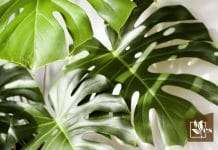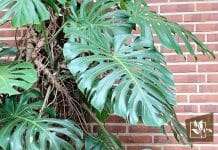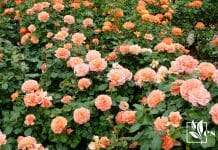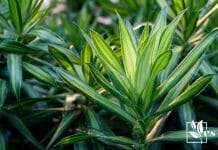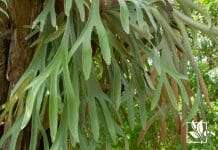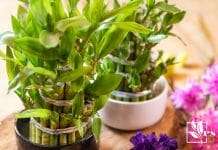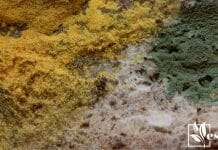White fungus on tree trunk looks really unsettling, and there are two main reasons for this occurrence, a benign powdery mildew infection or rapidly destructive heart rot.
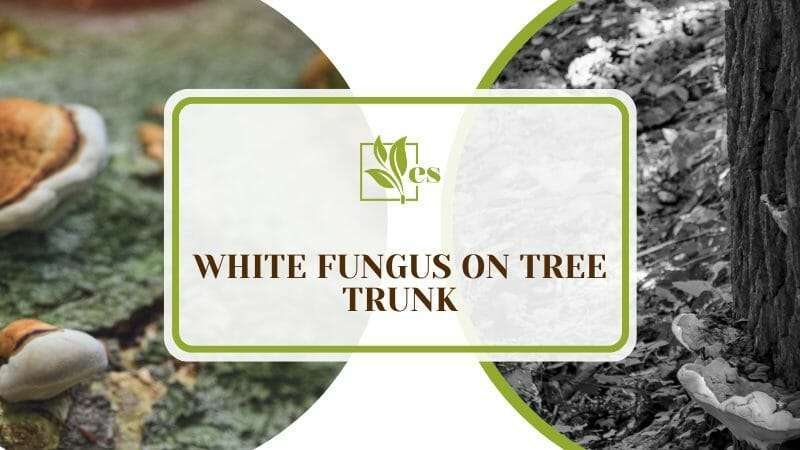
In this comprehensive guide, we go through both fungal diseases in detail so you can save and treat your precious trees immediately.
JUMP TO TOPIC
White Mold on Tree Trunk: What Could Be Causing It
There are two main fungal diseases that might be causing white mold to develop on your tree trunks. Both of them are quite different from each other and very easy to diagnose and treat.
We’ll be going through both of these diseases in detail.
– Heart Rot
Heart rot is a very common fungal infection that affects all woody trees. It is a sinister infection that destroys the tree trunks and branches from inside out, so by the time you start noticing its white spots on tree bark, most of the damage has already been done.
– Signs and Symptoms: How To Recognize Heart Rot
Since heart rot begins eating the tree trunks from inside out, you will not notice any signs of disease until the infection has significantly progressed. If there is a cut in the bark, you might be able to notice that your tree has begun to completely rot from the inside.
In later stages, you will notice a sort of white growth on tree trunk. White-colored fruiting bodies that are shaped like mushrooms will appear on the outside of the trunk. These fruiting bodies are called conks or brackets.
The appearance of one conk suggests that approximately one whole cubic foot of wood has been decayed behind it. If several of these conks and brackets can be seen on your trunk, then the damage caused is already pretty severe.
The good news is that heart rot affects only the dead wooden outer part of the tree and leaves the living portions alone. Eventually, most trees become so structurally damaged that their branches fall off and their trunks begin to crack.
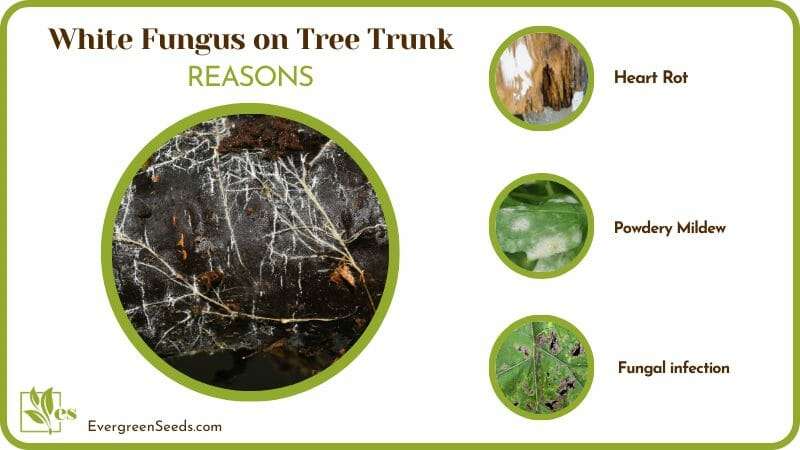
– Powdery Mildew
Powdery mildew is a very common fungal infection that affects all sorts of trees and plants. It is also most probably the reason behind the white stuff growing on tree trunk in your garden.
The species of trees most commonly affected by powdery mildew are as follows:
- Dogwood
- Magnolia
- Maple
- Basswood
– What Powdery Mildew May Look Like
Powdery mildew is an infection with quite a diverse set of symptoms. It may appear differently in different species of plants. Young plants are more severely affected by powdery mildew as compared to adult plants. Continue reading to learn some of its most common presentations.
Powdery mildew may appear as superficial white stuff on tree trunk and other plant surfaces. The stem, bark and branches of the tree may appear brownish or have pure white spots on them. The bark and leaves of the trees affected by powdery mildew often appear to have powder sprinkled on them, hence the name of the disease.
In prolonged and severe infections, the leaves of the affected tree might turn yellow and then prematurely fall off. This happens when the infection causes severe nutrient deficiency in the plant.
Sometimes, proper white-colored mushroom-like growths emerge from the bark of the affected trees. In late summer or early fall, round ball-like fungal masses might be seen forming in these growths.
White Fungus on Tree Bark: Prevention and Treatment
It is very important for garden keepers to be aware of what types of fungal infections might cause white spots on their tree trunks. In fact, you should always be actively working towards preventing your trees from getting infected by fungal molds.
In this section, we’ll find out what preventative measures you can take against heart rot and powdery mildew and what steps you can take to treat these conditions.
Heart Rot: Prevention and Treatment
Learn how to get rid of the heart rot fungal mold by following these tips.
– How To Prevent Heart Rot
The fungus that causes heart rot gains access to the inside of the tree through wounds produced due to various reasons. Wounds and injuries from insect attacks, fire, animals and logging will predispose your tree to a heart rot infection. Take special care to protect your plant from such injuries.
When pruning your tree, take care not to prune large areas of bark all at once. This exposes your trees to attacks by the heart rot fungi. Remove all broken stubs of fractured branches after a storm or fire. You don’t want any vulnerable branch to be the gateway to this infection.
In addition, begin shaping your trees early on so that you don’t need to cut and prune its branches later in its life. Cutting adult branches covered with a thick layer of bark will definitely make them more vulnerable to mold attacks.
– How To Treat Heart Rot
Heart rot is a disease that is nearly impossible to completely treat once your tree becomes affected by it. This is more true because, by the time the conks or brackets appear externally, the tree has already been damaged extensively from the inside.
Prevention is the best treatment you can do to these trees. Get your trees checked at least once a year by a trusted tree services contractor.
If your tree has been extensively damaged already, it will need to be cut down to a stump. The diseased parts of tree trunk that have been cut should be burned to prevent the fungal spores from spreading to neighboring trees.
Powdery Mildew: Prevention and Treatment
As widespread as powdery mildew is in nature, it is rarely fatal to the trees that it attacks. It can, however, lead to a disfigurement of the tree along with severe leaf fall. Learn how to prevent and treat this disease below.
– Prevention
Avoid overwatering the tree or keeping the soil around it moist for most of the time. Powdery mildew loves to grow under wet and high humidity conditions. Plant trees in brightly lit places with adequate air circulation as mildew infections thrive under shaded conditions.
A mildew-resistant variety of trees will have a much decreased chance of succumbing to this infection than a non-resistant one, so choose your trees wisely. When planting trees, make sure they are not planted too close together. Adequate spacing is a must between individual trees.
In large trees, prune the old leaves and branches on a regular basis. This allows sunlight and air to penetrate the deeper parts of the tree and prevent the hot, humid conditions that mildew likes to grow under.
– Treatment
If your tree does develop white stuff on its tree trunk due to powdery mildew, you need not worry. This condition is benign and not exactly fatal. Read below to find out how to treat this condition.
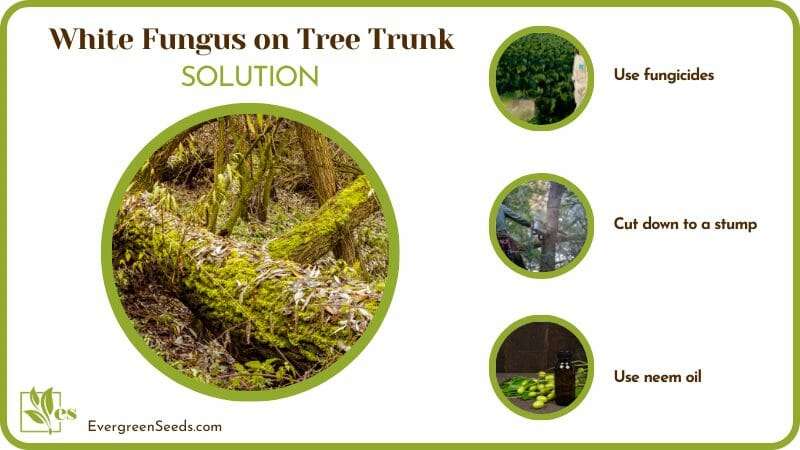
The easiest method to get rid of powdery mildew causing white spots on your trees is to use commercial fungicides. These are not only very effective but also quite easy to use. However, they can cause toxicity to your tree and the surrounding plants, so always exercise caution when using them.
A do-it-yourself approach to treating a tree infected by mildew spots is to wash it with a mixture of baking soda and water. Using neem oil on the affected parts also works like magic. The downside to this method is that these home remedies need to be consistently applied for some weeks before they start to take effect.
Final note:
No, fertilizing trees that are infected by white fungal molds is never a good idea. Fertilizer provides nutrients to the fungal spores and further stimulates their growth and spread. You might end up worsening the condition of your plant in the process.


